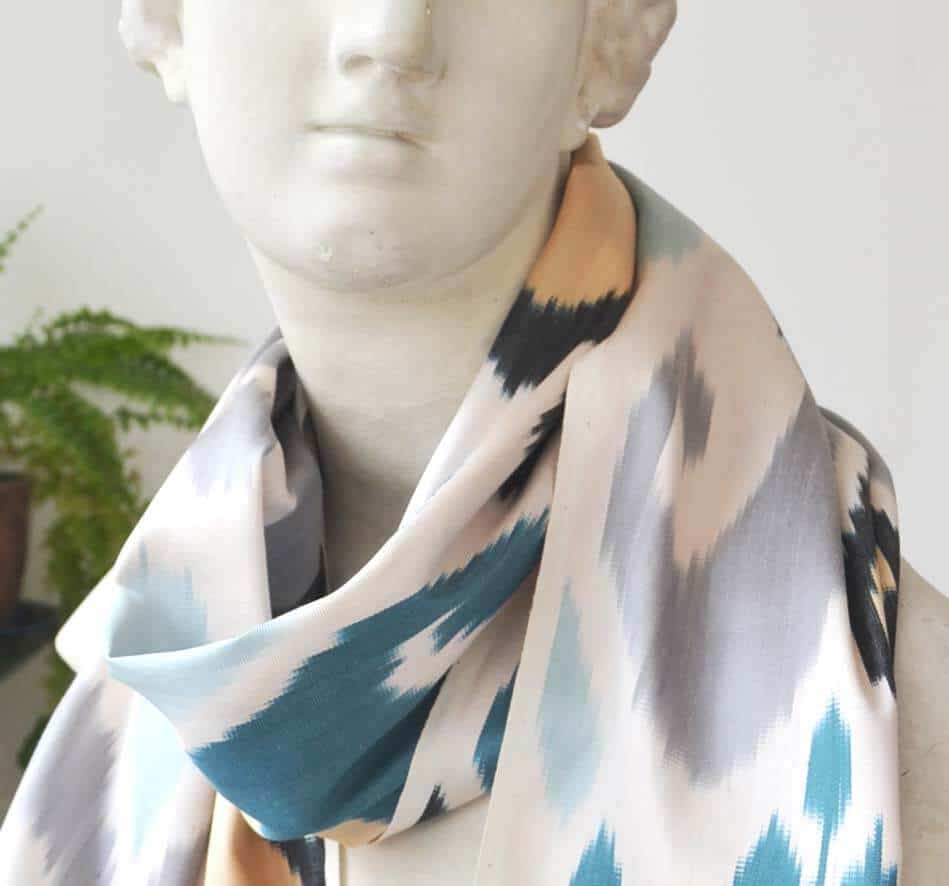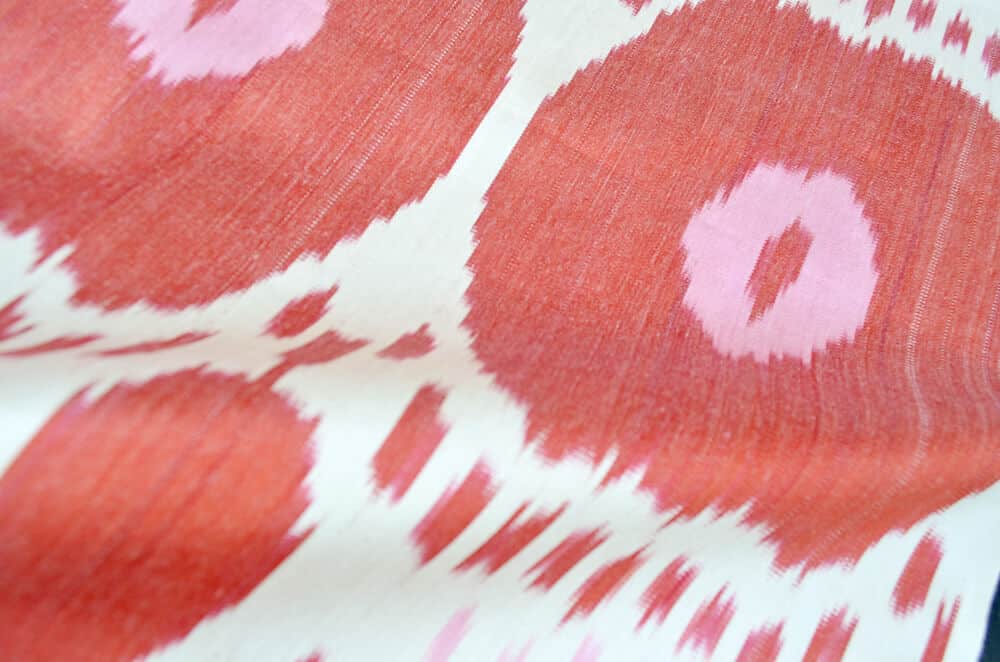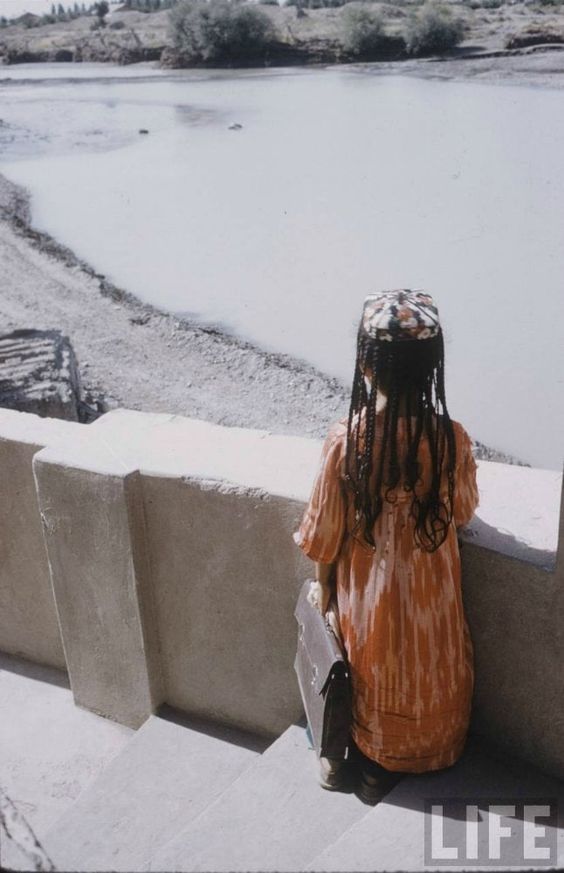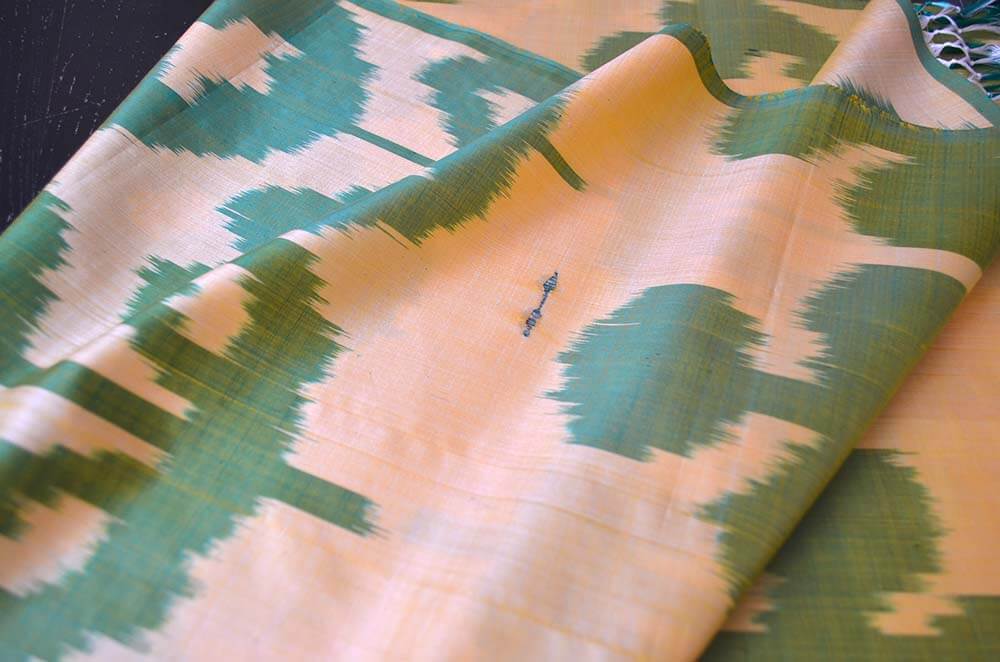5 Things You Should Know Before Buying Ikat Fabric
Ikat fabrics have become the latest buzz in the world of fashion and home decor, catching the eyes of those who crave a blend of tradition and style. However, diving into the ikat trend and buying ikat fabrics without a proper understanding of what you're getting into can lead to surprises. This article serves as your friendly "ikat fabric buyer beware," aiming to arm you with essential insights before you invest in these textiles. Please note that everything we cover in this post applies to ikat fabrics made in Uzbekistan. So, let's unravel the ikat mystery together.
1. Ikat Fabrics and their Narrowness
One of the characteristics of ikat fabrics from Uzbekistan is their distinctive width. These textiles typically measure between 40-50 cm (approximately 16-20 inches for our imperial friends). This specific range of width is not a random choice. It is a direct reflection of the limitations imposed by the traditional handlooms on which these fabrics are meticulously woven. We have a blog post specially dedicated to this aspect of Uzbek ikat fabrics. Due to these constraints, for projects requiring more expansive pieces of fabric, you'll find it necessary to join together multiple strips of ikat, ensuring the ikat patterns align seamlessly.
How much of ikat fabric will I need for a dress?
How much of ikat fabric will I need for a dress? This was a question posed by Roberta, one of our Italian customers. This post is our answer to Roberta, along with the reasoning behind it, so you can adapt the calculation for your own needs.
Buying handmade ikat fabrics can be thrilling, but figuring out how much you'll need for a dress can be tricky. This is especially true because Uzbek ikat fabrics are typically narrow in width and require careful ikat pattern matching. Width of Uzbek ikat fabrics, depending on a pattern, can vary from 35cm to around 50cm (13.7" to 19.6"). We specify this measurement in each product description.
1958 school girl | ikat dress and memories
We love this photo! It is from “Life” magazine archives and was taken in Tadjikistan in 1958 by an American photographer Howard Sochurek during his travels in the former USSR.
As a woman born and raised in Soviet Central Asia, this photo resonates deeply with me. It evokes a rush of nostalgia and fills my heart with warmth. It beautifully captures the essence of that era, speaking volumes about a social landscape of those times.
In 1958, the girl in this photo resembles how our mothers appeared when they attended Soviet schools: dressed in ikat dresses, hair traditionally braided in many braids, and carrying school bags far too large for their height and age. There was a clear determination to study!
Perfectly imperfect silk ikat scarf
At Uzbekalive we're passionate about bringing you the artisanal beauty of handmade ikat textiles from Uzbekistan. Our commitment to celebrating Uzbek craftsmanship and ikat traditions is at the core of what we do.
Handwoven Uniqueness
We embrace the inherent beauty of handmade pieces where no two items are exactly alike. The nuances in weaving, the subtleties of dyeing—these variations are the soul of each ikat fabric, making them truly one-of-a-kind.
Occasionally, some of our items display more distinctive weaving or dyeing irregularities than usual. Understanding the value of these imperfections, we mark these items as "As Is". These are the same unique unique pieces at discounted prices, celebrating their distinctiveness.




